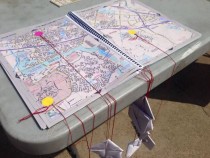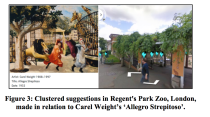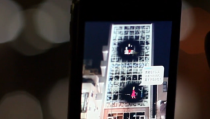Posts Tagged 'narrative mapping'

“Publish!” by Writ Large Press (2013-2015)
As I think about mapping narratives and creating narratives through interactions in space. I am sharing some of my previous work–more of a way to figure out how to build on it. Our “Publish!” series is all about engaging the public to write, curate and edit, to see themselves as part of the literary landscape.

“Publish!” by Writ Large Press (2013-2015)
As I think about mapping narratives and creating narratives through interactions in space. I am sharing some of my previous work–more of a way to figure out how to build on it. Our “Publish!” series is all about engaging the public to write, curate and edit, to see themselves as part of the literary landscape.

“Art Mapping” by the Tate Modern, et al. (2013-2015)
This appears to be two things (at least). One is mapping art works to their actual location in the real world. The other is tagging photographs and text to specific locations (creating art work). Comments and conversation centers around the tagged art works. I love how the art work anchors the conversation.

“Art Mapping” by the Tate Modern, et al. (2013-2015)
This appears to be two things (at least). One is mapping art works to their actual location in the real world. The other is tagging photographs and text to specific locations (creating art work). Comments and conversation centers around the tagged art works. I love how the art work anchors the conversation.

“N Building” by teradesign + Qosmo (2009)
N Building is a commercial building near Tachikawa station. The facade is a static QR code. When viewed through an iPhone app, characters appear, store information and live Tweets from people inside the building. From the designers: “Our proposed vision of the future is one where the facade of the building disappears, showing those inside who want to be seen.”

“N Building” by teradesign + Qosmo (2009)
N Building is a commercial building near Tachikawa station. The facade is a static QR code. When viewed through an iPhone app, characters appear, store information and live Tweets from people inside the building. From the designers: “Our proposed vision of the future is one where the facade of the building disappears, showing those inside who want to be seen.”
